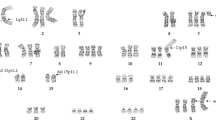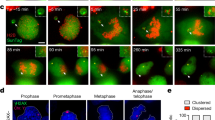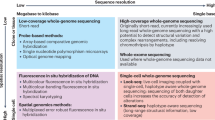Abstract
The technique of fusing mitotic cells to interphase cells, thereby producing condensation of the chromosomes of the interphase cell (so-called 'premature chromosome condensation' or PCC), has allowed detection of the initial number of chromosome breaks and their repair following ionising radiation. However, the difficulty and tedium of scoring all the chromosome fragments, as well as the inability to readily detect exchange aberrations, has limited the use of PCC. We describe here the use of the recently developed technique of fluorescence in situ hybridisation with whole chromosome libraries to stain individual human chromosomes (also called 'chromosome painting') with the PCC's and show that this overcomes most of the limitations with the analysis of PCC's. First, by focusing on a single chromosome, scoring of breaks in the target chromosome is easy and rapid and greatly expands the radiation dose range over which the PCC technique can be used. Second, it allows the easy recognition of exchange type aberrations. A number of new applications of this technology, such as predicting the radiosensitivity of human tumours in situ, are feasible.
This is a preview of subscription content, access via your institution
Access options
Subscribe to this journal
Receive 24 print issues and online access
$259.00 per year
only $10.79 per issue
Buy this article
- Purchase on Springer Link
- Instant access to full article PDF
Prices may be subject to local taxes which are calculated during checkout
Similar content being viewed by others
Author information
Authors and Affiliations
Rights and permissions
About this article
Cite this article
Evans, J., Chang, J., Giaccia, A. et al. The use of fluorescence in situ hybridisation combined with premature chromosome condensation for the identification of chromosome damage. Br J Cancer 63, 517–521 (1991). https://doi.org/10.1038/bjc.1991.123
Issue Date:
DOI: https://doi.org/10.1038/bjc.1991.123
This article is cited by
-
Biological dosimetry in astronauts
La Rivista del Nuovo Cimento (1996)



